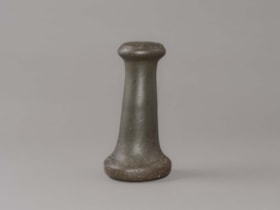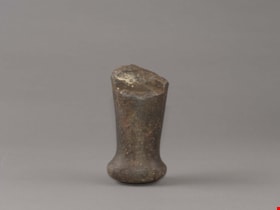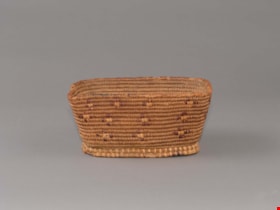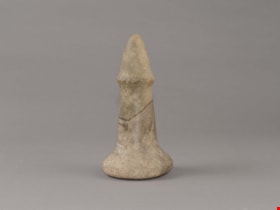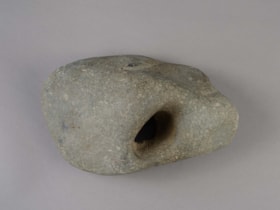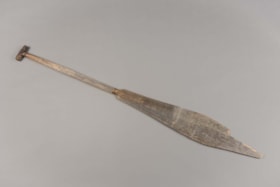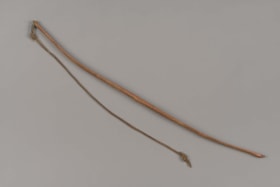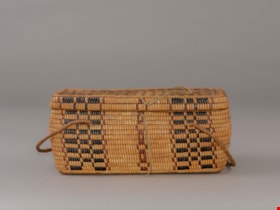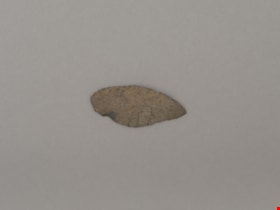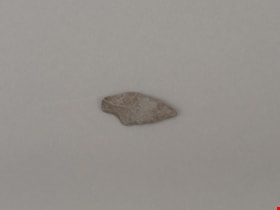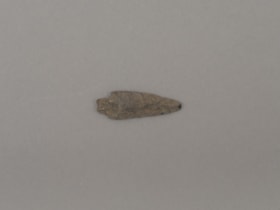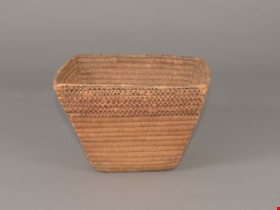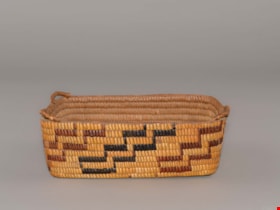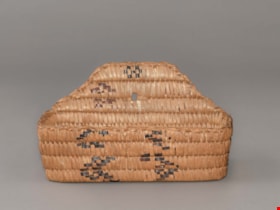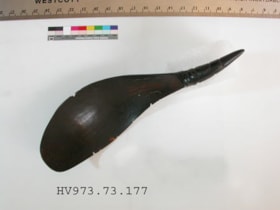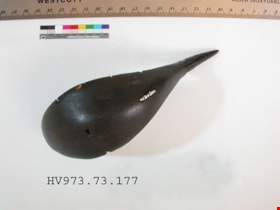Narrow Results By
Person / Organization
- Brown, Cice Chandler 2
- Burnaby Centennial '71 Committee 1
- Burnaby Village Museum 1
- George, Chief Daniel "Dan" 1
- Gill, Mohinder Kaur 1
- Gill, Prem Kaur 1
- Gill, Santokh "Gurmail" Singh 1
- Hanuse, Roy James 2
- Hill, Annie Sara Kenrick 2
- Hill, Louis Claude "Claude" 33
- Oakalla Prison Farm 2
- Peers, Robert Claude Kenrick "Bob" 1
Interview with Cice Brown, May 13, 2005 - Track 7
https://search.heritageburnaby.ca/link/museumdescription4482
- Repository
- Burnaby Village Museum
- Date
- 1930-1949 (interview content), interviewed May 10, 2005
- Collection/Fonds
- Burnaby Village Museum fonds
- Description Level
- Item
- Physical Description
- 1 sound recording (mp3) (0:03:14 min)
- Scope and Content
- Track 7: This portion of the recording pertains to changes to Burnaby since Cice’s childhood. Cice discusses the rural nature of South Burnaby, and the sense of security of that time. She talks of the changes caused by the creation and growth of the Metrotown area. Cice describes how her husband’s …
- Repository
- Burnaby Village Museum
- Collection/Fonds
- Burnaby Village Museum fonds
- Series
- Museum Oral Histories series
- Subseries
- Growing Up in Burnaby subseries
- Description Level
- Item
- Physical Description
- 1 sound recording (mp3) (0:03:14 min)
- Material Details
- Interviewer: Tom Gooden Interviewee: Cice Brown Date of Interview: May 13, 2005 Total Number of Tracks: 7 Total length of all Tracks: 0:40:19
- Scope and Content
- Track 7: This portion of the recording pertains to changes to Burnaby since Cice’s childhood. Cice discusses the rural nature of South Burnaby, and the sense of security of that time. She talks of the changes caused by the creation and growth of the Metrotown area. Cice describes how her husband’s veteran status earned them a discount on a building lot from the City of Burnaby, allowing her to continue to live there.
- History
- Recording of an interview with Cice Brown, interviewed by Tom Gooden on May 13 2005. This recording was completed for an exhibit, Growing Up in Burnaby, for the Burnaby Village Museum. Major themes discussed are growing up in Burnaby in the 1930s and 40s.
- Creator
- Burnaby Village Museum
- Names
- Brown, Cice Chandler
- Accession Code
- BV017.45.3
- Access Restriction
- No restrictions
- Reproduction Restriction
- May be restricted by third party rights
- Date
- 1930-1949 (interview content), interviewed May 10, 2005
- Media Type
- Sound Recording
- Planning Study Area
- Maywood Area
Audio Tracks
Interview with Cice Brown, May 13, 2005 - Track 7, 1930-1949 (interview content), interviewed May 10, 2005
Interview with Cice Brown, May 13, 2005 - Track 7, 1930-1949 (interview content), interviewed May 10, 2005
https://search.heritageburnaby.ca/media/hpo/_Data/_BVM_Sound_Recordings/Oral_Histories/2017_0045_0003_007.mp3Interview with Prem Kaur Gill, Santokh Singh Gill and Mohinder Kaur Gill
https://search.heritageburnaby.ca/link/museumdescription19347
- Repository
- Burnaby Village Museum
- Date
- [1957-2022] (interview content), interviewed 11 Nov. 2022
- Collection/Fonds
- Burnaby Village Museum fonds
- Description Level
- Item
- Physical Description
- 1 sound recording (m4a) (118 min., 39 sec.) + 1 sound recording (mp3) (115 min., 20 sec.)
- Scope and Content
- Item consists of an oral history interview with Santokh "Gurmail" Singh Gill and Mohinder Kaur Gill and their daughter, Prem Kaur Gill conducted by interviewers, Anushay Malik and Rajdeep. The interview is conducted in English, Punjabi, Hindi and Urdu. The three members of the Gill family share the…
- Repository
- Burnaby Village Museum
- Collection/Fonds
- Burnaby Village Museum fonds
- Series
- Museum Oral Histories series
- Description Level
- Item
- Physical Description
- 1 sound recording (m4a) (118 min., 39 sec.) + 1 sound recording (mp3) (115 min., 20 sec.)
- Material Details
- Interviewers: Anushay Malik, Rajdeep Interviewees: Prem Kaur Gill, Santokh "Gurmail" Singh Gill and Mohinder Kaur Gill Location of Interview: Gill family residence on Warwick Avenue in Burnaby Interview Date: November 11, 2022 Total Number of tracks: 1 Total Length of all Tracks: (1:58:39) Digital master recording (m4a) was converted to mp3 for access on Heritage Burnaby
- Scope and Content
- Item consists of an oral history interview with Santokh "Gurmail" Singh Gill and Mohinder Kaur Gill and their daughter, Prem Kaur Gill conducted by interviewers, Anushay Malik and Rajdeep. The interview is conducted in English, Punjabi, Hindi and Urdu. The three members of the Gill family share their ancestral background, their personal experiences immigrating to Canada, living in Burnaby and working in British Columbia as South Asian immigrants. 00:00 – 27:34 Santokh “Gurmail” Singh Gill and Mohinder Kaur Gill share their migration stories and experiences living and working in British Columbia as South Asian immigrants and their eldest child, Prem Kaur Gill shares her own experiences as a child of South Asian immigrants and growing up in British Columbia as a South Asian Canadian. Gurmail Singh Gill was born in the District of Jalandhar and Mohinder Kaur Gill was born in Hoshiapur of the Indian state of Punjab. Gurmail describes how he moved from India to England with his family in 1957, immigrated to Canada from England in 1966, married his wife Mohinder in England in 1968 and brought his family (parents and two siblings) to Canada from England in 1970 and other relatives including his wife’s family in the 1970s and 1980s. Mohinder and Gurmail Gill recollect their arranged marriage in England in 1968, their immigration process and explain how they arrived in Burnaby residing with a cousin at 4649 Georgia Street until they were able to purchase their own home after a few years. Gurmail shares names and connections to the relatives that came to British Columbia before him. Gurmail and Mohinder tell how they lived in the basement of the house and rented out the upper floor to save money. The couple recall what they brought with them when they immigrated to Canada and Mohinder Kaur Gill tells of how before leaving India, she and her mother made a special rajai for her to take with her. Mohinder describes the process of making a rajai (a quilted blanket that was made by hand). Gurmail and Mohinder Gill talk about the challenges that they’ve experienced as new immigrants including not being fluent in English, the cold weather and not having very many family or friends nearby to provide support. They attended the Gurdwara on Ross Street or Akali Singh Sikh Society Gurdwara on Skeena in Vancouver. They explain how there was limited access to grocery stores that supplied Punjabi and Indian spices and other cooking supplies. They talk about how they used a food mill and mortar and pestle to grind their own spices and flour and how Mohinder often made traditional sweets like barfi and laddo and pakoras using pea flour when they couldn’t get Besan flour. 27:35 – 36:11 Gurmail provides more details on his family’s immigration story, including names of relatives, how his six siblings and parents all immigrated to British Columbia in 1970 and how in the early 1970s and mid 1980’s Gurmail and his family sponsored approximately 70 friends and relations from India (including Mohinder’s family) to immigrate to Canada. When Mohinder’s family arrived they lived with them in their house until they were able to purchase property next door and build their own home. Children in the families all attended elementary and high school in Burnaby which now amounts to three generations. 36:12 – 59:28 Gurmail and Mohinder Gill talk about their experiences of racial discrimination. Gurmail recalls members of the South Asian community, Dr. Hari Prakash Sharma, Harinder Mahil and Charan Gill starting the British Columbia Organization to Fight Racism. Gurmail tells of how he got involved contributing some of his union dues as a member of CAIMAW (Canadian Association of Industrial Mechanical and Allied Workers Union- Local 15) and as a friend of Charan Gill and Raj Chouhan of the Canadian Farm Workers Union. Gurmail Gill explains how he was a founding member of CAIMAW and treasurer until the union merged with the Canadian Auto Workers Union (in 1991). Mohinder and Gurmail tell of how people from the South Asian community were discouraged from wearing Punjabi dresses or head coverings for fear of being yelled at with racial slurs and how it was often scary to go outside. Many from their community often avoided attending the Akali Singh Gurdwara since a head covering was required and people were afraid of being a target. Gurmail provides details about his work with A1 Steel, how different unions were formed pertaining to various skillsets and jobs per company and how he became a member of CAIMAW Local 15 (foundry workers). Mohinder recollects her experiences as a mother, the daily tasks involved and friends that she made who’d also emigrated from Punjab. Mohinder describes how she designed and sewed many Punjabi dresses using her electric sewing machine and how she learned English by attending adult classes at a church on Commercial Drive. Mohinder and her mother attended the classes for two hours per day for six years at a cost of twelve dollars for ten weeks. Once Mohinder could speak a little English, she started working and was able to practice more. 59:29 – 1:06:08 Mohinder, Gurmail and Prem talk about some of their favourite traditional foods including corn roti and spinach curry and how they grow many of their own vegetables including peppers, eggplant, saag (spinach), onions, garlic, cilantro, zucchini, squash and fenugreek. Mohinder reflects on how access to Punjabi clothing and fabric stores in Vancouver has changed and that ready made food is now more available. Traditional foods were previously made from scratch with women gathering together and cooking for hours and now it’s gotten easier but more expensive and less of a community feel. 1:06:09- 1:55:20 Mohinder and Gurmail Gill discuss and share their perspectives and experiences on raising a family in the past versus today. Gurmail imparts that all of his siblings became educated and secured professional careers while he continued to work in the trades. Prem Kaur Gill shares her own experiences growing up and attending school in Burnaby. Gurmail and Mohinder Gill recall the type of suitcase that they brought with them when they immigrated and how they recently they got rid of it. Gurmail and the group reflect and discuss the confusion with racial identity terms that have been used in this country. They comment that South Asians were referred to as “Hindu” and “East Indian” and Indigenous peoples were referred to as “Indian” and the controversy and racism behind some of these terms. The group discusses the impact of the caste system and other discriminatory experiences and compare their experiences of living in England to living in Canada. Prem comments on how it’s just recently that South Asian customs, celebrations and practices have been recognized and celebrated here in Canada, like Diwali and yoga. They comment on how much of the language, culture and customs have been retained in Surrey where many can still communicate in Punjabi and don’t need to be fluent in English. The group discusses how many South Asians immigrants first lived and worked in Vancouver but with rising property prices many moved to Surrey expanding and establishing a much larger South Asian community with resources. The group discusses and compares the differing travel routes that many of them and their relatives took when immigrating and travelling between India and Canada. The group talks about Rajdeep’s ancestral village in India which is near the Gill village of Firozpur. Gurmail explains the origins and details behind his family name that was changed from “Shergill” to “Gill” and the name “Santokh” from his maternal side.
- History
- Interviewees' biographies: Santokh "Gurmail" Singh Gill was born in the District of Jalandhar in Punjab, India. Gurmail moved to England with his family in 1957 and immigrated to British Columbia in 1966. Gurmail married his wife, Mohinder Kaur Gill in England in 1968 and she immigrated to British Columbia from England soon after. Gurmail first lived with a cousin in Burnaby before purchasing a home of his own in Burnaby where he raised his family. Gurmail worked in the steel industry and was a member and treasurer of the CAIMAW before the union merged with the Canadian Auto Workers Union. Mohinder Kaur Gill was born in the Hoshiapur in Punjab, India. She married her husband Santokh "Gurmail" Singh Gill in England in 1968 and immigrated to Burnaby, British Columbia to join her husband. Mohinder and Gurmail Gill have four children, all born in Burnaby. Prem Kaur Gill was born in Burnaby in 1969 and is the eldest child of Santokh "Gurmail" Singh Gill and Mohinder Kaur Gill. Prem grew up and attended school in Burnaby. Interviewers' biographies: Anushay Malik is labor historian with a geographical focus on South Asia. Anushay studied at the University of London and was a research fellow at the International Institute of Social History in Amsterdam, Netherlands. In 2014, Anushay moved back to her native Pakistan and joined Lahore University of Management Services as an Assistant Professor. In 2023, Anushay is a visiting scholar at Simon Fraser University and lives in Burnaby with her family. Anushay was a co-curator of the Burnaby Village Museum exhibit “Truths Not Often Told: Being South Asian in Burnaby”. Rajdeep was born and raised in the Lower Mainland and is of Punjabi (South Asian) descent. She has an Associate of Arts degree in Asian Studies from Kwantlen Polytechnic University, a Bachelor of Arts (Hons.) in Anthropology from the University of British Columbia. She is a student in the Restoration of Natural Systems program at the University of Victoria. Rajdeep works at Simon Fraser University as a Program Assistant and as a researcher with the City of Burnaby. At Burnaby Village Museum, Rajdeep contributed to the exhibit “Truths Not Often Told: Being South Asian in Burnaby”.
- Creator
- Burnaby Village Museum
- Subjects
- Clothing
- Foods
- Indigenous peoples
- Buildings - Religious - Temples
- Food Processing Tools and Equipment
- Persons - South Asian Canadians
- Social Issues
- Social Issues - Racism
- Migration
- Occupations
- Organizations - Unions
- Responsibility
- Rajdeep
- Malik, Anushay
- Accession Code
- BV022.29.2
- Access Restriction
- No restrictions
- Reproduction Restriction
- No known restrictions
- Date
- [1957-2022] (interview content), interviewed 11 Nov. 2022
- Media Type
- Sound Recording
- Notes
- Title based on contents of item
- Transcript available upon request - contact Burnaby Village Museum
- Indian Family System Reference notes: Baba = informal way to say grandfather; old man Bibi = informal way to say grandmother; old woman Dada= paternal grandfather Dadi= paternal grandmother Dadke= paternal family members; paternal side (Various spellings might exist for the following terms) Thaiyya= father’s elder brother (uncle) Thaiyyi= father’s elder brother’s wife (aunt) Chacha= father’s younger brother (uncle) Chachi= father’s younger brother’s wife (aunt) Bua= father’s sister (older or younger) (aunt) Phuphar= father’s sister’s husband (uncle) Nana= maternal grandfather Nani= maternal grandmother Nanke/nanka= maternal family members; maternal side Mama= mom’s brother (older or younger) (uncle) Mami= mom’s brother’s wife (aunt) Maasi= mom’s sister (older or younger) (aunt) Maasard= mom’s sister’s husband (uncle)
Audio Tracks
Interview with Prem Kaur Gill, Santokh Singh Gill and Mohinder Kaur Gill, [1957-2022] (interview content), interviewed 11 Nov. 2022
Interview with Prem Kaur Gill, Santokh Singh Gill and Mohinder Kaur Gill, [1957-2022] (interview content), interviewed 11 Nov. 2022
https://search.heritageburnaby.ca/media/hpo/_Data/_BVM_Sound_Recordings/Oral_Histories/2022_0029_0002_002.mp3Interview with Cice Brown, May 13, 2005 - Track 5
https://search.heritageburnaby.ca/link/museumdescription4480
- Repository
- Burnaby Village Museum
- Date
- 1930-1949 (interview content), interviewed May 10, 2005
- Collection/Fonds
- Burnaby Village Museum fonds
- Description Level
- Item
- Physical Description
- 1 sound recording (mp3) (0:07:55 min)
- Scope and Content
- Track 5: This portion of the recording continues with the topic of recreation. The next questions pertain to restrictions on children at the time, cultural diversity, living arrangements, and toys. Cice is asked to describe her best and worst memories. She mentions that there were few restrictions …
- Repository
- Burnaby Village Museum
- Collection/Fonds
- Burnaby Village Museum fonds
- Series
- Museum Oral Histories series
- Subseries
- Growing Up in Burnaby subseries
- Description Level
- Item
- Physical Description
- 1 sound recording (mp3) (0:07:55 min)
- Material Details
- Interviewer: Tom Gooden Interviewee: Cice Brown Date of Interview: May 13, 2005 Total Number of Tracks: 7 Total length of all Tracks: 0:40:19
- Scope and Content
- Track 5: This portion of the recording continues with the topic of recreation. The next questions pertain to restrictions on children at the time, cultural diversity, living arrangements, and toys. Cice is asked to describe her best and worst memories. She mentions that there were few restrictions on children, and discusses the nature of community at the time. She comments on the cultural and religious backgrounds of the people she knew. Cice describes her family’s home and living arrangements, and how they reflected her family’s situation. She recalls a favourite toy.
- History
- Recording of an interview with Cice Brown, interviewed by Tom Gooden on May 13 2005. This recording was completed for an exhibit, Growing Up in Burnaby, for the Burnaby Village Museum. Major themes discussed are growing up in Burnaby in the 1930s and 40s.
- Creator
- Burnaby Village Museum
- Names
- Brown, Cice Chandler
- Accession Code
- BV017.45.3
- Access Restriction
- No restrictions
- Reproduction Restriction
- May be restricted by third party rights
- Date
- 1930-1949 (interview content), interviewed May 10, 2005
- Media Type
- Sound Recording
Audio Tracks
Interview with Cice Brown, May 13, 2005 - Track 5, 1930-1949 (interview content), interviewed May 10, 2005
Interview with Cice Brown, May 13, 2005 - Track 5, 1930-1949 (interview content), interviewed May 10, 2005
https://search.heritageburnaby.ca/media/hpo/_Data/_BVM_Sound_Recordings/Oral_Histories/2017_0045_0003_005.mp3hand maul
https://search.heritageburnaby.ca/link/museumartifact3392
- Repository
- Burnaby Village Museum
- Accession Code
- BV988.6.1
- Description
- Flat topped stone maul.
- Subjects
- Persons
- Indigenous peoples - British Columbia
- Woodworking Tools and Equipment
- Woodworking Tools and Equipment - Maul
Images
Documents
hand maul
https://search.heritageburnaby.ca/link/museumartifact3393
- Repository
- Burnaby Village Museum
- Accession Code
- BV988.6.2
- Description
- Flat topped stone maul, broken
- Subjects
- Persons
- Indigenous peoples - British Columbia
- Woodworking Tools and Equipment
- Woodworking Tools and Equipment - Maul
Images
Documents
storage basket
https://search.heritageburnaby.ca/link/museumartifact12639
- Repository
- Burnaby Village Museum
- Accession Code
- BV985.4184.1
- Description
- Tub shaped coiled cedar root basket with cedar root foundation and overcast rim. Walls of basket flare slightly towards rim. Imbricated with designs in red cherry bark and grass. Design is known as cluster of flies. The foot on the bottom of the basket, made from two extra rows of coiling, is a feature that protects the base of the basket from wear and tear. White beading on the foot. Interior Salish: Nlaka’pamux: Spuzzum possibly
- Object History
- White beading on the foot of the basket is said to be a feature typical of Spuzzum. This was reported by basket makers from that community during collections research conducted at MOA to Sharon Fortney and Bill Mclennan.
- Country Made
- Canada
- Province Made
- British Columbia
- Culture
- Nlaka'pamux
Images
Documents
hand maul
https://search.heritageburnaby.ca/link/museumartifact15555
- Repository
- Burnaby Village Museum
- Accession Code
- HV983.32.13
- Description
- Nipple topped stone maul. Nipple topped stone maul. It has a crack through the entire shaft and the two halves look of different colour and stone type. There is a large chip missing along the crack.
- Object History
- The donor was of European decent and was given this maul by an unidentified person. In general, hand mauls are used in woodworking todrive antler wedges or spreading sticks into logs and split planks. They were also used in combination with chisels for detail work. Their presence at an archeological site is viewed as evidence of long term habitations. They are associated with house building, canoe building, housepost and welcome figure carving. Nipple top hand mauls are identified as Marpole Culture (400 BC - 400 AD).
- Country Made
- Canada
- Province Made
- British Columbia
- Culture
- First Nations
- Subjects
- Persons
- Indigenous peoples - British Columbia
- Woodworking Tools and Equipment
- Woodworking Tools and Equipment - Maul
Images
Documents
stone anchor
https://search.heritageburnaby.ca/link/museumartifact15961
- Repository
- Burnaby Village Museum
- Accession Code
- HV983.60.1
- Description
- Smooth gray stone with a irregularly shaped hole on the narrower end of the stone.
- Object History
- Anchor used to secure a house post, or post supporting a wall. Large stone with hole through center,
Images
Documents
paddle
https://search.heritageburnaby.ca/link/museumartifact16839
- Repository
- Burnaby Village Museum
- Accession Code
- HV980.2.131
- Description
- Men’s paddle carved from cedar wood. The shaft is flattened with a "T" style grip mortised at top The blade is flat with one side of the tip missing. There are other cracks in the blade.
- Object History
- Style of blade indicates it is a man’s paddle, for everyday use (see Barnett 1955:116). Anthropologist Homer Barnett notes: “Paddles were made of yellow cedar, yew, and maple. Those of maple and cedar were painted, the man’s being black and the woman’s red. A smoky pitch fire and oil gave an impenetrable black (116). Men’s paddles had a crutch or crosspiece handle – either one piece or doweled on. There were different shapes of paddles for women, steering, sealing and night hunting.
- Marks/Labels
- "Yale" written on tag.
- Country Made
- Canada
- Province Made
- British Columbia
- Site/City Made
- Yale
- School/Style
- Coast Salish
Images
Documents
hunting bow
https://search.heritageburnaby.ca/link/museumartifact16840
- Repository
- Burnaby Village Museum
- Accession Code
- HV980.2.132
- Description
- Small maple hunting bow. A leather thong is tied to one end of the bow. It is loose at the other end, although, there is a knot that could slip over the bow. There are traces of green paint on the wood. Interior Salish: Nlaka’pamux: Spuzzum First Nation
- Object History
- Homer Barnett writes about Coast Salish bows: “the main hunting bow did not differ from the one used in fighting. It was made of yellow cedar root when this wood could be obtained from the mountains. The trunk wood was also used. An alternative was yew. Inferior bows for ducks and other birds were made from hardhack. Bows were about three or four feet long/ The were rather flat and were about the breadth of three fingers at the widest parts on either side of the grip, which was constricted and slightly thicker. They tapered from the centre towards both ends. The ends were curved away from the holder for a better string purchase (1955:100)
- Plant fibres were seldom made into bow strings. More common were two-ply cords of sinew or gut. Atypically, a skin thong was used (1955:101).
- Marks/Labels
- There is writing inscribed on the inside of the bow, which reads: “1925" "Made for me by Spuzzum chief.”
- Country Made
- Canada
- Province Made
- British Columbia
- Site/City Made
- Spuzzum
- School/Style
- Coast Salish
- Culture
- Nlaka'pamux
Images
Documents
storage basket
https://search.heritageburnaby.ca/link/museumartifact17680
- Repository
- Burnaby Village Museum
- Accession Code
- HV978.2.12
- Description
- Rectangular coiled cedar root basket with cedar slat foundation. Parallel slat construction for lid, which is covered in beaded designs. Overcast handles attach to the front and back of basket at both ends. Conoid lid fits overtop of the basket, rather than lying flat. Basket body is completely imbricated with canary grass, black-dyed and red cherry bark. This amount of decoration more common on older pieces and was used to protect the surface of the basket. Leather hinges attach lid to body of basket and there are leather ties at front on lid and body of basket. Possible ladder design. Interior Salish: Nlaka’pamux
- Country Made
- Canada
- Province Made
- British Columbia
- Culture
- Nlaka'pamux
Images
Documents
basket
https://search.heritageburnaby.ca/link/museumartifact17681
- Repository
- Burnaby Village Museum
- Accession Code
- HV978.2.13
- Description
- Nut-shaped, coiled cedar root basket with cedar root foundation and watch-spring base and lid construction. Hinged lid is attached with leather ties. Covered in beading, where in the decorative elements are laid flat on surface, rather than folded into cedar root stitches as is done with imbrication. Designs are in red and black dyed cherry bark. Interior Salish: Nlaka’pamux
- Object History
- Nut-shaped baskets are identified as one of the oldest types by Haeberlin and Teit (1928: 202-3). They were used for storing berries and were also common work baskets for women, used to hold small tools – awls, thread, shells, trinkets and other odds and ends (202).
- Country Made
- Canada
- Province Made
- British Columbia
- Culture
- Nlaka'pamux
Images
Documents
projectile point
https://search.heritageburnaby.ca/link/museumartifact19193
- Repository
- Burnaby Village Museum
- Accession Code
- BV002.57.6
- Description
- Projectile point, stone; rounded end. Bifacially flaked – stone removed on both sides of the point; basalt and lead shaped
- Object History
- The donor inherited this artifact from his mother, Katherine Maude (Kitty) Peers, who inherited them from her father, Louis Claude Hill. The artifacts were found on his farm, Brookfield Farm, at Douglas Road and Sperling Avenue (now site of Burnaby Village Museum).
- Culture Phase: Possibly Locarno Beach phase (3520 -2200 Before Present)
- Historic Neighbourhood
- Burnaby Lake (Historic Neighbourhood)
Images
Documents
projectile point
https://search.heritageburnaby.ca/link/museumartifact19194
- Repository
- Burnaby Village Museum
- Accession Code
- BV002.57.7
- Description
- Projectile point, stone; indented on one side. Triangular stemmed projectile point
- Object History
- The donor inherited this artifact from his mother, Katherine Maude (Kitty) Peers, who inherited them from her father, Louis Claude Hill. The artifacts were found on his farm, Brookfield Farm, at Douglas Road and Sperling Avenue (now site of Burnaby Village Museum).
- Culture Phase: Possibly Locarno Beach phase (3520 -2200 Before Present)
- Geographic Access
- Deer Lake Avenue
- Historic Neighbourhood
- Burnaby Lake (Historic Neighbourhood)
- Planning Study Area
- Burnaby Lake Area
Images
Documents
projectile point
https://search.heritageburnaby.ca/link/museumartifact19195
- Repository
- Burnaby Village Museum
- Accession Code
- BV002.57.8
- Description
- Projectile point, stone. Lancelot, parallel stemmed – stem has straight sides (squared off appearance).
- Object History
- The donor inherited this artifact from his mother, Katherine Maude (Kitty) Peers, who inherited them from her father, Louis Claude Hill. The artifacts were found on his farm, Brookfield Farm, at Douglas Road and Sperling Avenue (now site of Burnaby Village Museum).
- Longer points like this were used on spears; sometimes in combination with a tool called an atl atl (spear thrower).
- Culture Phase: Possibly Locarno Beach phase (3520 -2200 Before Present)
- Historic Neighbourhood
- Burnaby Lake (Historic Neighbourhood)
Images
Documents
berry basket
https://search.heritageburnaby.ca/link/museumartifact27527
- Repository
- Burnaby Village Museum
- Accession Code
- HV974.119.1
- Description
- Trapezoidal shaped, coiled cedar root basket with cedar slat foundation. Finished with an overcast rim with root foundation. Design elements missing from one side of the basket, which is uncommon but has been seen on cradles from the Mount Currie area (Interior Salish: Lil'wat). It was perhaps the side that rests on the wearer's back. Steeply angled sides.
- Coast Salish: Sḵwx̱wú7mesh? Interior Salish: Stl’atl’imx: Lil’wat?
- Object History
- The donor reported that the baskets were traded in the early 1920s for clothes by the donor's mother, who lived in North Vancouver. Her mother told her the "Capilano Indians" used to go door to door with their baskets in North Vancouver.
- Design elements missing from one side of the basket – possibly the side that would have rested against the owner’s back.
- Steeply angled sides keep berries from crushing those at bottom of basket. Work baskets have sides that are more rounded.
- Baskets like these were used with a woven tumpline (wool strap) that was worn against the forehead, while basket was carried on back.
- Country Made
- Canada
- Province Made
- British Columbia
- Culture
- Stl’atl’imx
Images
Documents
work basket
https://search.heritageburnaby.ca/link/museumartifact27528
- Repository
- Burnaby Village Museum
- Accession Code
- HV974.119.2
- Description
- Rectangular coiled cedar root basket with cedar slat foundation and remnants of a loopwork rim. The shiny appearance of this grass suggests it is canary grass. Black dyed and red cherry bark are used for the zigzag designs. Coast Salish: Sḵwx̱wú7mesh?
- Object History
- The donor reported that the baskets were traded in the early 1920s for clothes by the donor's mother, who lived in North Vancouver. Her mother told her the "Capilano Indians" used to go door to door with their baskets in North Vancouver.
- Zig zags are sometimes referred to as lightening or snake tracks.
- Country Made
- Canada
- Province Made
- British Columbia
- Culture
- Sḵwx̱wú7mesh
Images
Documents
basket
https://search.heritageburnaby.ca/link/museumartifact27529
- Repository
- Burnaby Village Museum
- Accession Code
- HV974.119.3
- Description
- Rectangular coiled cedar root basket with cedar slat foundation, lid has parallel slat construction and is covered with beaded designs edged by imbrication in canary grass. Basket has a flat lid that is hinged to body with leather ties. A mistake was made in how the design was applied to one end of this basket. This is not common as many weavers would correct this mistake. Completely imbricated walls, beaded design on lid. Coast Salish: Sḵwx̱wú7mesh?
- Object History
- The donor reported that the baskets were traded in the early 1920s for clothes by the donor's mother, who lived in North Vancouver. Her mother told her the "Capilano Indians" used to go door to door with their baskets in North Vancouver.
- Diamonds are considered a star pattern and are common to Sḵwx̱wú7mesh and Nlaka’pamux basketry. The main design resembles a ladder or fence and is uncommon.
- Country Made
- Canada
- Province Made
- British Columbia
- Culture
- Sḵwx̱wú7mesh
Images
Documents
comb basket
https://search.heritageburnaby.ca/link/museumartifact29797
- Repository
- Burnaby Village Museum
- Accession Code
- HV973.69.4
- Description
- Rectangular shaped coiled cedar root basket with cedar slat foundations and triangular shaped posterior wall that is higher than the other three. There is a small opening at the top of this wall to allow the basket to be hung.
- Designs are done in black dyed cherry bark. Beaded designs are made by laying decorative materials flat over the surface of the coils, and securing them in place with alternating stitches of the cedar root.
- Coast Salish: Tsleil-Waututh?
- Object History
- A comb basket that was created for sale or trade. The chevron shaped designs are associated with flying geese, and are also used for knitting and weavings. The designs at the top of the basket, above the opening, are called cluster of flies. These designs are common amongst the Coast Salish. There are spaces where the foundation materials show, rows are not even width, the beaded designs are irregular. These are often traits associated with learning.
- Measurements
- Wth. 3 1/2 inches X Lth. 8 1/4 inches
- Country Made
- Canada
- Province Made
- British Columbia
- School/Style
- Coast Salish
- Culture
- Tsleil-Waututh
Images
Documents
Mountain Goat Horn Spoon
https://search.heritageburnaby.ca/link/museumartifact30018
- Repository
- Burnaby Village Museum
- Accession Code
- HV973.73.177
- Description
- Horn spoon with fine carving on the narrow handle. Material is very dark.
- Object History
- Along the Northwest Coast, in general, undecorated spoons of wood and horn were used in everyday life, while more elaborately carved versions were used on special occasions. Horn spoons were often passed down in families as heirlooms, such spoons are generally darker in colour than those of recent manufacture. The bowls of these spoons are too large to place in the mouth, so food is sipped from the sides or the end.
- The bowl of the mountain goat horn spoon is made from the larger part of the horn, at the base. The handle is made from the tip. It is straightened out by steaming in a wooden mould and then scored out inside as part of the shaping process
- Country Made
- Canada
- Province Made
- British Columbia
- School/Style
- Coast Salish
- Culture
- Haida
